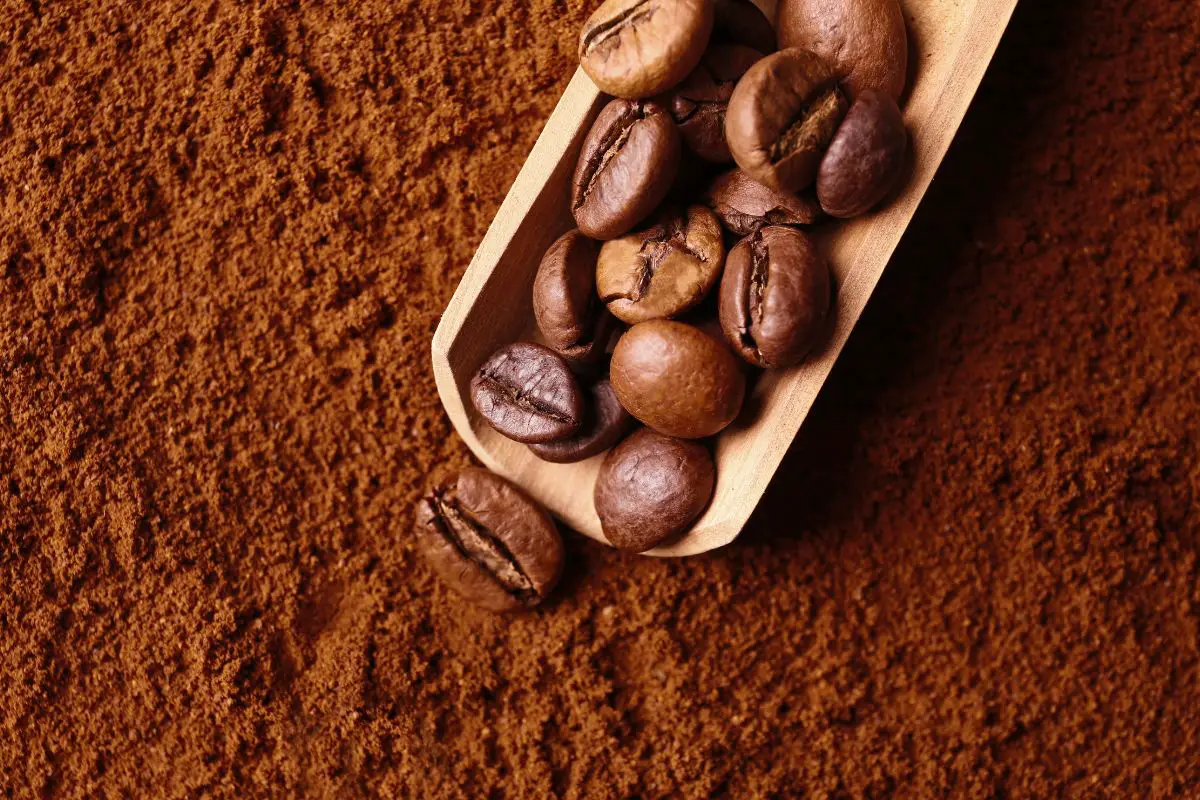Table of Contents
Coffee is a staple in many people’s daily routines, and it comes in many forms. From cappuccinos to lattes, coffee drinkers have a variety of options to choose from. One of the most popular coffee options is espresso, which is made using a specific type of coffee bean. But what sets espresso beans apart from coffee beans, and how do they differ in taste, cost, and more?
*This post may contain affiliate links. As an Amazon Associate we earn from qualifying purchases.
In this comprehensive guide, we’ll dive into the details of espresso beans and coffee beans, and explore the key differences between the two. By the end of this article, you’ll be a coffee expert and know exactly which type of bean is right for you.
Introduction
Espresso and coffee beans are both made from the same plant, Coffea. However, there are key differences between the two that set them apart. Espresso beans are specifically roasted and processed to make a strong, concentrated shot of coffee that is used as the base for many other coffee drinks. On the other hand, coffee beans are roasted for a longer time and ground into a finer powder, making them ideal for drip coffee and other similar drinks.
Origin of Espresso and Coffee Beans
Espresso and coffee beans have been around for hundreds of years, and their origins can be traced back to Ethiopia. From there, they spread to the Middle East, Europe, and eventually the rest of the world.
In the early 1900s, an Italian named Luigi Bezzera invented the espresso machine, which uses high-pressure water to quickly extract a shot of coffee. This method of brewing coffee quickly gained popularity, and espresso became a staple in Italian cafes.
Coffee beans, on the other hand, have a longer and more widespread history. They were first cultivated in Ethiopia, but have since been grown in countries all over the world, including South America, Africa, and Asia.
Processing and Roasting
The processing of espresso and coffee beans is one of the key differences between the two. Espresso beans are typically processed using the wet method, where the coffee cherries are soaked in water to remove the pulp. This method allows for a more uniform roast and enhances the flavor of the beans.
Coffee beans, on the other hand, are often processed using the dry method, where the cherries are left to dry in the sun. This method results in a more uneven roast and can lead to a more complex flavor profile.
When it comes to roasting, espresso beans are roasted for a shorter period of time and at a higher temperature than coffee beans. This results in a darker roast and a stronger, more bitter flavor. Coffee beans are roasted for a longer period of time and at a lower temperature, resulting in a lighter roast and a milder flavor.
Flavor Profile
The flavor profile of espresso and coffee beans can vary greatly depending on a number of factors, including the origin of the beans, the roasting method, and the brewing method.
Espresso beans have a strong, bold flavor that is often described as bitter or earthy. This is due to the high-pressure extraction process and the dark roast of the beans. Espresso is typically consumed in small doses, so the bold flavor is not overpowering.
Coffee beans, on the other hand, have a milder and more nuanced flavor profile. Depending on the origin of the beans, you might taste notes of fruit, chocolate, or nuttiness. The lighter roast and longer extraction process of coffee allows these flavors to shine through.
The brewing method can also greatly affect the flavor of your coffee. Espresso is typically made using an espresso machine, which uses high pressure to quickly extract a shot of coffee. This method results in a strong, concentrated flavor that is perfect for use as the base for other coffee drinks.
Coffee, on the other hand, is typically brewed using a drip coffee maker or a French press. This method allows the water to slowly extract the flavor from the beans, resulting in a milder and more nuanced taste.
Brewing Methods
As mentioned earlier, espresso is typically made using an espresso machine, while coffee is brewed using a drip coffee maker or a French press. Each method has its own unique pros and cons, and the right choice for you will depend on your individual needs and preferences.
Espresso machines use high pressure to quickly extract a shot of coffee, resulting in a strong, concentrated flavor. This method is fast and efficient, and is perfect for those who are short on time in the morning. However, espresso machines can be expensive and can be challenging to use if you’re new to the world of coffee.
Drip coffee makers, on the other hand, are easy to use and affordable. Simply grind your beans, place them in the machine, and let it do the rest. This method results in a milder, more nuanced flavor that is perfect for those who enjoy a more relaxed coffee experience.
The French press is another popular brewing method for coffee. This method involves steeping the grounds in hot water for several minutes, resulting in a rich and full-bodied flavor. French presses can be a bit messier than other methods, but they offer a unique and enjoyable coffee experience.
Caffeine Content
Caffeine is the active ingredient in coffee that gives you that much-needed energy boost in the morning. The caffeine content of espresso and coffee can vary greatly depending on a number of factors, including the type of beans used, the brewing method, and the serving size.
Espresso typically contains more caffeine per serving than coffee, with a single shot containing around 30-50 milligrams of caffeine. This is due to the concentrated extraction process and the smaller serving size.
Coffee, on the other hand, contains around 95 milligrams of caffeine per 8-ounce serving. This is due to the longer extraction process and the larger serving size. However, the exact caffeine content of your coffee will depend on the type of beans used and the brewing method.
Cost Comparison
The cost of espresso and coffee beans can vary greatly depending on a number of factors, including the origin of the beans, the roasting method, and the brand.
Espresso beans are typically more expensive than coffee beans, due to the specialized roasting and processing methods used. In addition, espresso machines can be expensive to purchase and maintain, adding to the overall cost of your espresso experience.
Coffee beans, on the other hand, are widely available and can be purchased at a lower cost. Drip coffee makers are also more affordable than espresso machines, making coffee a more budget-friendly option for many people.
Environmental Impact
The production of coffee and espresso beans can have a significant impact on the environment, from the use of pesticides and fertilizers to the energy needed to transport the beans from the growing regions to your local coffee shop. The environmental impact of your coffee or espresso choice is an important consideration, and there are ways to make a more sustainable choice.
When it comes to espresso beans, it’s important to look for beans that are certified organic or shade-grown. Shade-grown beans are grown under a canopy of trees, which helps to reduce the use of pesticides and fertilizers and supports biodiversity.
Coffee beans can also have a significant environmental impact, particularly in terms of water usage and waste. Choosing coffee beans that are certified fair trade, organic, and shade-grown can help to reduce the negative impact of coffee production on the environment. Additionally, look for brands that use eco-friendly packaging and support sustainability initiatives.
Social Impact
The coffee and espresso industry can also have a significant impact on the lives of coffee farmers and workers. Choosing coffee and espresso beans that are certified fair trade can help to ensure that farmers and workers are paid a fair wage and have access to good working conditions.
In addition, look for brands that are committed to sustainability and ethical sourcing. This can include supporting local communities, reducing waste, and promoting environmental conservation efforts.
In conclusion, there is no clear winner when it comes to espresso beans vs. coffee beans. Both have their own unique advantages and disadvantages, and the right choice for you will depend on your individual needs and preferences.
Consider factors such as flavor, brewing method, caffeine content, cost, environmental impact, and social impact when making your decision. And most importantly, enjoy your coffee or espresso whichever way you prefer it!
So, there you have it folks, everything you need to know about the great espresso vs coffee debate. Whether you prefer a strong and concentrated shot of espresso, or a mild and nuanced cup of coffee, there’s a perfect choice out there for you. And remember, when it comes to coffee, there’s no such thing as a wrong answer – as long as you enjoy it!

